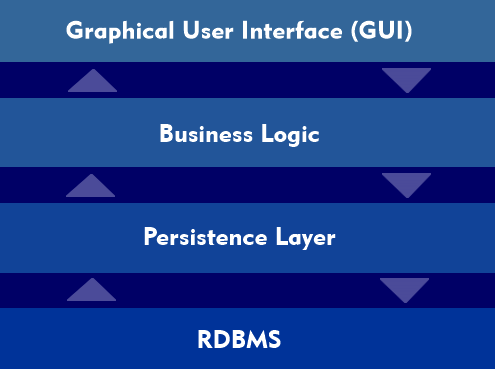n-tier application
Multi-layer software systems are characterized by a division into different layers. Each layer performs a specific, clearly defined task and makes its services available to the other layers via a comparatively simple interface. The application layers can be distributed over several computers (distributed software systems), but do not have to be.
A classic multi-tier model is already the client/ server application (2-tier application), where a program part on the client connects to a program part on the server. The client is usually a GUI application on a personal computer( PC) that contains no business logic (business rules) and is relatively "dumb". The server, on the other hand, performs all functions that contain business logic and require access to the database.
Modern enterprise applications usually consist of 3 or more layers, where the database itself is seen as a separate layer.
The main advantage of multi-tier systems is the minimization of touch points between the sub-components of the system. The remaining touch points are precisely described by the interfaces. This reduces the likelihood that changes to one layer will affect another and, in the worst case, produce unexpected side effects.
In addition to this separation of responsibilities, which leads to easier maintainability, scalability is also improved. For example, it is possible to run several layers on a single computer during the start-up phase of new software. If the load increases later, individual layers can be moved to other computers without requiring changes to the software.

